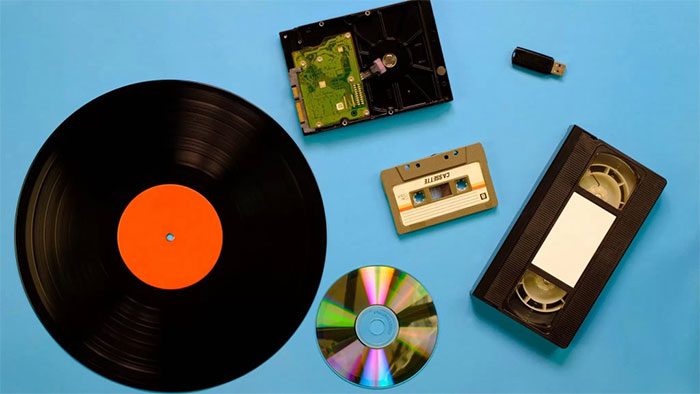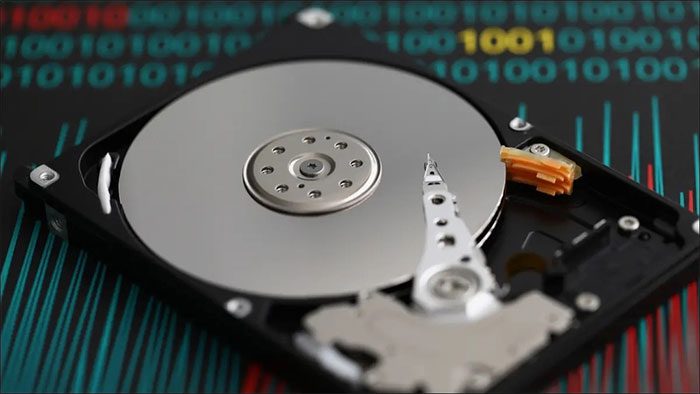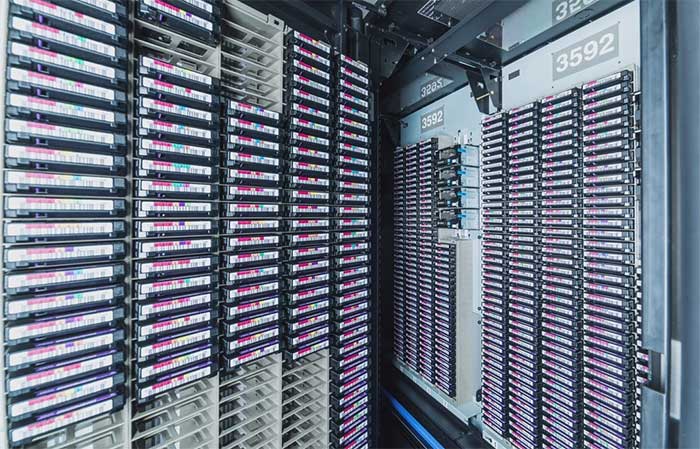HDD and SSD drives ensure data safety for about 5-10 years, while M-DISC optical storage promises a lifespan of up to 1,000 years.
For thousands of years, humans have stored information by carving it into stone, wood, and other durable materials. Along with the advancement of modern technology, there are many different ways to store data, ensuring its safety for a certain period.
For common HDD and SSD drives, this duration is typically 5-10 years. Magnetic tapes can store data for several decades, while M-DISC optical storage claims a lifespan of hundreds of years, even up to 1,000 years.
However, according to Howtogeek, the durability of each type of storage medium also depends on how we handle and maintain them.
The Importance of Data Storage
Typically, most people believe that large businesses and important figures are the primary concerns regarding long-term data storage. However, even individual users may have information that needs to be preserved for 10 years or even 50 years.

To safely store data for a long time, users need to choose the appropriate form. (Image: Rev).
For various reasons, you may need to store data long-term. This could include documents, old records that you wish to pass on to future generations, or keeping financial records and other necessary documents for legal procedures.
Even in cases where you want to preserve personal memories, such as photos and videos, users also need to find safe storage solutions.
The key to long-term data preservation is finding a reliable storage format that lasts for the desired time. Users can utilize physical storage methods such as high-quality paper, specially designed film, or digital storage options like hard drives and cloud services.
Challenges of Digital Storage
If considering digital storage for long-term data, users should understand the challenges they may face.
Firstly, digital storage mediums like HDDs and SSDs can degrade over time and will ultimately fail. This requires users to create new copies before the storage device encounters an issue.

HDDs and SSDs are common storage mediums but can degrade over time. (Image: Shutterstock).
Another challenge to consider is outdated file formats. Some formats may become incompatible with new software as technology advances. Thus, even if the storage medium still exists, it may not be readable by any device, or the details about the files may no longer be complete.
On the other hand, each time data is migrated to a newer format for preservation, the data may degrade in some way that no one notices until someone needs to access it.
With digital formats, hackers, malware, and natural disasters can all threaten data. Therefore, users need robust security measures to protect their information and keep the storage devices in a safe and stable environment for the long term.
The Best Long-Term Data Storage Solutions
Optical storage discs, such as M-DISC, are specifically designed for long-term data storage. Unlike regular CDs and DVDs, this medium uses a special layer made from materials that resist degradation over time, including ultraviolet rays and humidity.
According to manufacturers’ claims, M-DISC can last up to 1,000 years or more. While this number has yet to be verified in practice, the information comes from reliable testing.
Magnetic tape has been used for decades for long-term data storage. It is highly durable, resistant to temperature and humidity. This medium is also relatively inexpensive compared to other options.

Inside a data center that uses magnetic tape for storage. (Image: Depositphotos).
Typically, magnetic tapes are stored in cold storage with stable temperature and humidity conditions, which can last for 30 years or more, while some high-quality tapes can last up to 50 years.
However, magnetic tape requires specialized equipment to read and write data. Due to its complex mechanical construction, such machinery may not last as long as user storage requirements.
Hard disk drives (HDD) have been the primary storage device for computers for decades. They are reliable, fast, and relatively inexpensive. However, HDDs are not designed for long-term storage. The average lifespan of a hard drive is only about 3-5 years.
SSDs are faster and more reliable than HDDs, but they are more expensive and also not designed for long-term storage. The average lifespan of an SSD is about 5-10 years.
If using HDDs or SSDs for long-term storage, users should regularly back up their data and replace the drives every few years. For SSDs, if not powered on periodically, they can still lose data due to charge leakage from memory cells.
The final option is cloud storage, where the responsibility for keeping data safe is given to a third-party company such as Google or Microsoft. These companies are required to adhere to storage standards to ensure data safety.
However, this is not truly a long-term storage option, as there is no guarantee that they will still exist in 20 or 50 years.


















































